Overview
This document is applicable to users who have installed the Data Portal plugin to learn plugin functions.
Version
| Report Server Version | Data Portal Version | Functional Change |
|---|---|---|
11.0.7 | V1.0 | / |
11.0.8 | V1.1 | Allowed viewing component preview thumbnail when you add a component, which is easy to recognize the component content. Allowed viewing component source information in the data portal editing page, which facilitates component traceability. |
V1.4 | Optimized the display content of the data dashboard, without viewing global data by default. Allowed viewing the filtered results of default parameter values set when you edit templates. | |
V1.6 | Added System Operation component. | |
V1.8.2 | 1. No permission control for System Operation component from Intelligent O&M 2. Deleted Analysis of user behavior in the past 30 days component and Template access details in the past 30 days component in System Operation. | |
V1.9 | Supports mobile data portals. | |
V1.11 | Added Indicator Library component. | |
11.0.19 | V1.12 | Allowed you to add chart and table components in large screen reports, with FVS Dashboard Edit Mode plugin V1.17.1 and later versions. |
| 11.0.22 | V1.14 | Allowed you to add the whole FVS template or the specific sheet of a FVS template in data portals on the mobile terminal. |
Function Description
Through Data Dashboard component, the following functions can be achieved:
Add components from multiple templates in a data portal to view the key content of multiple templates at once and perform related interactive operations.
Build an O&M and monitoring portal quickly through built-in System Operation component.
Note: To demonstrate various functions of the Data Dashboard component, this section places different themed data dashboard components in a single data portal. You can create multiple themed portals as needed. For details about how to display different themed portals on the homepage, see Switching between Multiple Portals on the Homepage.

Notes
In Data Portal plugin V1.8.1 and earlier versions, ordinary users need to be assigned Use permission under System Management > Intelligent O&M if they want to view System Operation component.

Adding a Component
Log in to the decision-making platform as the admin, choose System Management > Data Portal > Portal Management, and click Add Portal to create a data portal dashboard.

Select Data Dashboard on the data portal editing page. The component content that can be selected in Data Dashboard includes:
Note: You cannot select components in the mobile data dashboard component. Only the whole FVS template or the specific sheet of a FVS template can be added to the data portal dashboard.
1. Templates in directories within the creator's permissions
Main body (except the parameter panel) of a general report
Chart/table components of large screen reports
Report blocks and chart blocks in the body/absolute canvas block/tab block of a dashboard

2. Components added in System Operation component of Data Portal plugin V1.6 and later versions
Note 1: Only the super admin can add the System Operation component.
2. The System O&M component is not supported on mobile terminals.
Top 15 templates with the most visits in the past 30 days
The top 10 report access statistics in the past 30 days
The last 10 report access statistics after the last 30 days
Average daily visits for the current month
Number of active templates in the current month
Number of active users in the current month
Statistics of the current month's visits

Component Content
Allow dragging and dropping to add data dashboard components.
Setting Component Content
Platform Directory
| Report Type | Component | Supported Operations |
|---|---|---|
General Report | Main body (except the parameter panel) of the report | 1. Displays the effect of template pagination preview. 2. Displays the self-adaptive effect of template content (follow the display mode of template self-adaptive property on the PC end). Display following the display mode of template self-adaptive property on the PC terminal.
3. Does not display the parameter panel and filter widgets according to parameter default values in template editing, rather than directly filter widgets. If parameters with the same name exist in the template, parameters take effect in the following order: parameter panel widget > template parameter > global parameter > dataset parameter. 4. Supports horizontal/vertical scrolling, paging, hovering over data points to view prompts, legend interaction, and switching charts through a button or carousel. |
FVS Visualization Dashboard | Chart Component | 1. All components display the results filtered by default parameters. 2. Component content is displayed in a holistic adaptation way. All areas of the chart (without scrollbars horizontally and vertically) are displayed in the data dashboard component. 3. Only interactive events whose type is web link are supported. Component animation is not supported. 4. The component styles and properties set in a FVS template cannot be introduced when you add a data dashboard component. |
FVS Table Component | 1. All components display the results filtered by default parameters. 2. Display template content self-adaptive effect (follow the self-adaptive mode of table component in the FVS template).
3. In table toolbar, you can set to display pagination button to switch pages. The toolbar position is the same as the toolbar position of the table component in the dashboard report. 4. Super links can be set within a cell. Marquee effect, interactive events, and component animations are not supported. 5. The component styles and properties set in a FVS template cannot be introduced when you add a data dashboard component. | |
Dashboard | Report block includes:
| 1. Template content self-adaptive effect (followng the self-adaptive property of the dashboard) Display following the display mode of template self-adaptive property on the PC terminal.
Display following the display mode of the report block.
2. Horizontal and vertical scrolling and paging are supported if the report block toolbar is enabled. You can hover over a data point to view its prompts, interact with legends, and switch charts through a button or carousel. 3. Filters based on the default parameter values under the template editing status. If parameters with the same name exist in the template, parameters take effect in the following order: parameter panel widget > template parameter > global parameter > body control > dataset parameter. |
Chart block includes:
| 1. Template content self-adaptive effect (followng the self-adaptive property of the dashboard)
2. Supports horizontal/vertical scrolling, hovering over data points to view prompts, legend interaction, and switching charts through a button or carousel. Linkage and jumping are not supported. 3. Filters based on the default parameter values under the template editing status. If parameters with the same name exist in the template, parameters take effect in the following order: parameter panel widget > template parameter > global parameter > body control > dataset parameter. |
System Operation
Note: 1. The data update time for the System Operation component is 4:00 AM each day.
2. The System O&M component is not supported on mobile terminals.
| Components | Explanation |
|---|---|
Top 15 templates with the most visits in the past 30 days | Use a table to show the names and number of visits of the 15 most visited templates in the past 30 days. |
The top 10 report access statistics in the past 30 days | Use a bar chart to show the names and number of visits of the 10 most visited templates in the past 30 days. |
The last 10 report access statistics after the last 30 days | Use a bar chart to show the names and number of visits of the 10 least visited templates in the past 30 days. |
Average daily visits for the current month | Use an indicator card to show the average daily visits in the current month. |
Number of active templates in the current month | Use an indicator card to show the number of active templates in the current month. |
Number of active users in the current month | Use an indicator card to show the number of active users in the current month. |
Statistics of the current month's visits | Use a line chart to show the number of daily visits, the number of daily active templates, and the number of daily active users in the current month. |

Effect Display
PC
You can view the key information of multiple templates at once and perform relevant interactive operations.

You can also establish an O&M and monitoring portal quickly through the built-in System Operation component.

Mobile Terminal
You can preview template content on mobile terminals.

Component Style
Select a component. Then you can set the component style on the right.
There are two styles in Data Dashboard component: Follow Theme and Custom.
1. Follow Theme: The component style completely follows the style of Portal Theme, allowing you to only determine whether to display the component title and set the title text.
2. Custom: The component style does not change as Portal Theme switches. Component styles include Component Title, Title Text, Title Style and Component Background.
For details, see Data Portal Style.

Note: The style of the mobile data dashboard component is consistent with that of the portal theme. You can only set Component Title and Title Text.

Other Settings
Deleting a Component
Select a component and click the deletion button to delete the component.

Adjusting a Component
Hover your cursor over a component, and drag the dotted box popped up to resize and relocate the component

Component Information
Select a component and click the component information icon to view Component Name and Component Source.








